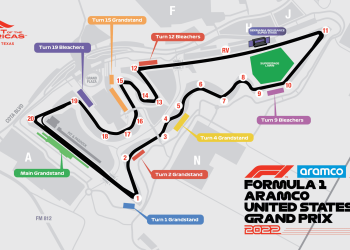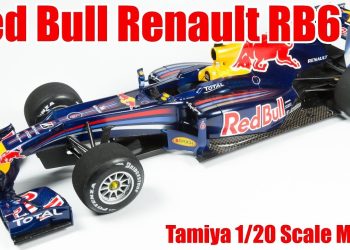It’s an interesting intersection, isn’t it? Formula 1—a sport renowned for its speed, precision, and strategizing—and autism, characterized by unique ways of processing information and interacting with the world. On the surface, these topics might seem worlds apart, but there’s more shared terrain than one might initially think. Can Formula 1 be connected to autism? Let’s buckle up and explore the intricacies of this intriguing question.
Understanding Autism: A Spectrum, Not a Line
Before exploring any connections, it’s crucial to grasp what autism truly is. Autism Spectrum Disorder (ASD) is a developmental condition impacting communication, behavior, and interaction. The spectrum aspect means individuals have varied experiences, struggles, and strengths—similar to how a diverse grid of tracks and skills define a Formula 1 driver’s career.
Did you know? Autism diagnosis often happens at a young age, but understanding the spectrum is a lifelong process, much like mastering different racing tracks throughout a driver’s career.
Formula 1’s Allure: A World of Patterns and Precision
Formula 1 is more than just fast cars; it’s about precision, data analysis, and strategy. For many aficionados with ASD, the meticulous patterns of racing or the allure of Formula 1 data analytics align with their interests. Understanding race strategies or analyzing car performance perfectly suits those with a fondness for detail and predictability—common traits in autism.
Shared Characteristics: Speed and Focus
Both arenas—autism and Formula 1—cherish a high level of focus. When a driver speeds down the track, every decision is focused and precise. Similarly, people with autism can experience a deep ability to focus on which they excel, often called “hyper-focus.”
Interesting Fact: Trailblazers like Temple Grandin have shown how focusing abilities characteristic of ASD can lead to outstanding achievements, analogous to the unwavering concentration of a Formula 1 driver setting a record lap.
Meeting of the Minds: Celebrities and Advocacy
Consider Lewis Hamilton, a name synonymous with modern Formula 1 success. He’s not directly connected to autism, but his openness about other personal struggles reflects a culture that increasingly accepts neurodiverse conditions, paving a path for others to acknowledge and embrace neurodiversity, including autism, within high-octane environments.
Building Community Connection
There’s a growing community of neurodiverse individuals, including those with autism, who find camaraderie in shared interests like Formula 1. Online forums and social media channels celebrate these connections, foregrounding voices that narrate the solitary and shared experiences of being a racing enthusiast with autism.
The Role of Data: Racing and the Spectrum
Data and analytics are the DNA of both Formula 1 racing strategies and educational or developmental tools used for autism. Just as a team analyzes lap timings and tire wear to optimize performance, many educational tools for autism use data-driven methods to tailor learning approaches to each individual’s needs. Isn’t it fascinating how the core methods of operation in different disciplines can connect so inventively?
| Aspect | Formula 1 | Autism |
|---|---|---|
| Focus | Critical for race strategy and execution | Often a characteristic feature, referred to as “hyper-focus” |
| Pattern Recognition | Understanding racing lines and opponent behavior | Strong skill in many individuals |
| Community | Fans and support teams around the world | Online forums and support groups |
| Data Utilization | Essential for race planning and car design | Used in personalized development plans |
The Role of Routine: Safety and Reassurance
Both worlds respect routines. For autistic individuals, routines often provide a sense of safety; predictable sequences of events can provide comfort. Formula 1, too, operates on routines—drivers adhere to checklists, regular practices, and race-day protocols, ensuring safety and promoting optimal performance.
Focus on Strengths: Mutual Empowerment
An interesting parallel here is how both arenas can benefit from emphasizing strengths rather than challenges. Formula 1 teams often pair a driver’s unique qualities with the right engineering innovations to gain competitive edge. Similarly, individuals with autism thrive when supported and allowed to focus on their strengths.
Guiding the Young Cars: Encouraging Early Interests
Exposure to stimulating experiences, such as motorsports, might enthuse interests in the young autistic minds, potentially guiding a pathway not just towards enjoyment, but connecting them with broader societal issues in science and engineering. Encouragement from family and teachers can make all the difference—a shared reality in nurturing both young athletes and autistic children.

- Nurture Interests: Encourage activities like racing simulations or engineering design.
- Education: Provide resources that link interests with learning.
- Support Networks: Engage with online communities that share common passions.
- Champion Diversity: Promote inclusion in all sports and disciplines.
Addressing Stereotypes: Life Beyond Misconceptions
Sometimes, the most substantial obstacles aren’t on the track, but rather in our minds. Negative stereotypes can hinder potential. While the world knows Formula 1 drivers to be more than just speed enthusiasts—embodying strategists and engineers—it’s crucial we view autistic individuals as diverse personalities with each harboring potential that’s as unique and flourishing as a Formula 1 grid.
Conclusion: A Shared Path of Understanding
Formula 1 and autism, at first blush, seem unlikely partners. Yet as we’ve journeyed through this exploration, their converging lines show how shared attributes such as focus, routine respect, and tailored community support bind them. These parallels reveal broader lessons in empathy and understanding, encouraging us to appreciate the diverse mosaic of human potential. So next time you hear the roar of an F1 engine, remember the ways it harmonizes with the silent but profound strengths of the autism spectrum.
Thank you for taking this journey with us. Feel free to explore more on our site about the unique relationships that make our world more connected and fascinating.















